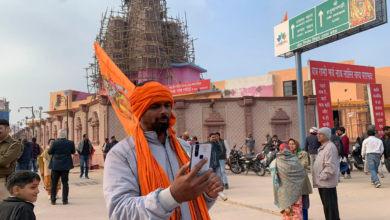Leading With Care: Latin American Women Are Rewriting Burnout And Business Culture

Rest is becoming a radical act from boardrooms to barrios. Across Latin America, women leaders are turning wellness from perk to policy—measuring recovery with the same rigor as revenue and demanding humane work by design, not charity, but strategy today.
From Taboo to Yardstick: How Burnout Became a Business Metric
Five years ago, suggesting a C-suite in Bogotá or Lima add exhaustion to the dashboard sounded like a soft diversion from “real work.” Then language changed, and with it, accountability. When burnout gained a formal definition—exhaustion, mental distancing, reduced efficacy—leaders could suddenly see it. Once visible, it demanded management.
That shift didn’t float down on a memo; it climbed up from the people carrying two and three shifts at once—paid work, unpaid care, and the community glue that keeps everything else intact. Latin American women reframed rest not as luxury but as infrastructure. They swapped the poster talk of resilience (code for suffering better) for design (engineer work, so suffering isn’t a prerequisite). And they pressed for operating procedures instead of pep talks: flexible schedules rooted in customer reality; enforceable windows of digital disconnection; psychosocial-risk assessments that land in risk committees, not forgotten inboxes; manager training that joins empathy with capacity planning.
What happens when you treat burnout like cash flow? You measure it, you forecast it, you prevent it. Meetings respect time zones and caregiving windows. Handoffs kill heroics before they become habit. Dashboards report people data with the same cadence as sales—overtime spikes, meeting creep, PTO underuse—so teams course-correct before a heart monitor has to.
This work has convening power. An Ibero-American congress first brought clinicians, labor lawyers, HR chiefs, designers, and reporters around a simple proposition: rest is a human right and an economic lever. Playbooks replaced panels. Now the agenda is landing in Cartagena with a sharper scope: humane leadership tied to efficiency, job design that honors biology and business reality, protection for caregivers in essential sectors, and tech that supports well-being without sliding into surveillance. The signal is unmistakable: preventing burnout isn’t about stronger backs—it’s about more intelligent systems.
The Cultural Pivot: From Heroic Sacrifice to Humane Performance
The region’s oldest legend says the best workers make impossibility look effortless. The perfect deck. The perfect dinner. The perfect demeanor—no tremor, no tell. The invoice for that choreography arrived with migraines, insomnia, depression, and disappearing talent. The new story rejects the bill.
“Always on” becomes “reliably available.” “Sacrifice” becomes “scope.” “Face time” becomes outcomes. It’s not softness—it’s strategy. In tight labor markets, cultures that chew through talent lose to those that compound it. Women entrepreneurs across the region understood the math first because they live it: you are sales, product, finance, and family logistics. Self-care isn’t indulgence; it’s uptime management.
So they put themselves on the schedule. They enforce no-meeting blocks. They automate repetitive tasks and bring in fractional help before the road map burns. They celebrate micro-wins to fuel momentum. They prune projects that don’t serve the mission. And they share what works—WhatsApp notes, coworking huddles, late-night voice messages—because every hour someone else doesn’t waste is an hour returned to the collective.
Within larger firms, Latina executives are building coalitions with legal, compliance, and finance teams. The case they make borrows the language of risk: psychosocial hazards are not “HR issues”; they’re enterprise exposures that hit safety, quality, even fraud. Interventions are operational—realistic staffing models, buffered deadlines, “golden hours” for deep work, and escalation paths that reward honest signals rather than punish them. They’re ethical, too: protections for whistleblowers who flag impossible loads and clarity about what “urgent” actually means.
The payoff is not theoretical. Cultures that keep promises—to customers and to the people who make those promises possible—miss fewer deadlines, rework less, and retain institutional memory. That’s the quiet miracle: less drama, more delivery.
Designing The Job, Not Just the Gym Benefit
The old wellness bundle—yoga mats, fruit bowls, a mindfulness app—was easy to market and easier to ignore—the new standard measures what matters at the point of production. Before anyone orders a smoothie, four design questions are answered in plain numbers.
First: What Is The Actual Load? Not the aspirational sprint plan or the budgeted headcount—the real demand, in real hours, across real weeks. If the math doesn’t pencil out, breathwork won’t save it. Scope shrinks, staffing rises, or velocity slows—explicitly, contractually, publicly.
Second: Where Are The Frictions? Does the CRM force double-entry? Do approvals ricochet through six calendars? Does the night shift inherit all emergencies? The fix might be as simple as rerouting an inbox, clarifying a standard, or burying a zombie report. Every friction removed returns energy to the work that matters.
Third: What Boundaries Are Codified? Encouragement is not policy. Policies are visible, shared, and embedded in tools: servers that delay after-hours email, status pages that define coverage windows, and escalation matrices that name the on-call human so everyone else stays off-call. Boundaries are enforceable when they’re not a secret.
Fourth: How Are We Measuring The Right Things? Track burnout risk like safety incidents—leading indicators (overtime, meetings, skipped PTO), lagging indicators (errors, absenteeism, turnover), and qualitative signals (pulse surveys, one-to-ones that ask about energy, not just OKRs). Publish the data internally and give fund managers the time and authority to change course.
In essential sectors—health, education, care—this design ethic is existential. “Care for the carers” stops being a slogan when rosters match patient acuity, rotations protect sleep, debriefs are built into the shift, and trauma-informed supervision is standard. The return shows up in patient outcomes, classroom stability, and community trust. It also shows up in budgets: it is cheaper to retain and protect a nurse than to replace one; it is more affordable to support a teacher than to onboard three in the same year.
Picture a public hospital that retools its weekend rotation, adds a 20-minute handoff ritual, and creates a protected hour each shift where no one can page unless a patient is crashing. Sick leave drops. Medication errors fall. Families notice—the spreadsheet notices, too.

Technology With Guardrails, Leadership with a Spine
There’s no algorithmic shortcut to humane work, but the right tools can help. Analytics that quantify systems—meeting bloat, Slack pings at midnight, chronic weekend work—can expose patterns managers miss. Yet the slope from insight to intrusion is slippery. The line is bright: measure systems, not bodies. Track calendars, not heart rates. Examine workflows, not private chats. A governance policy, a purpose statement, and opt-outs must accompany every metric. Trust is a scarce resource; collect it slowly, spend it wisely.
Still, the more decisive lever is not an app—it’s a leader. Humane leadership is not vibes and slogans; it is contract and cadence. It sounds like: “Here’s the priority stack. Here’s what we are not doing this quarter. Here’s the window when I won’t contact you. Here’s the escalation path if I mess that up.” It looks like: a senior woman saying no to scope creep in public, taking her vacation without apology, and defending a teammate’s right to log off. It feels like: psychological safety with performance teeth—candor without cruelty; accountability without martyrdom.
Cartagena’s gathering will go deep on that craft: how to size teams to decision cycles; how to train mid-managers to plan capacity; how to write policies regulators respect and employees actually use; how to deploy analytics that trigger care, not discipline. The most electric moments will likely be the most specific: an ER lead showing how a redesigned rotation cut sick days by a third; a fintech ops chief explaining how a four-hour “quiet block” raised reliability; a school principal describing a protocol that halved after-hours calls.
The social substrate matters too. Latin America’s gender gap in unpaid care isn’t a footnote—it’s the floor beneath every workday. When employers align schedules with public-school hours, top up parental benefits for all genders, or fund community childcare, they aren’t being “nice”—they’re investing in a labor market that can deliver. When policymakers enshrine right-to-disconnect frameworks, fold psychosocial-risk standards into labor codes, and fund mental-health access in primary care, they reduce the odds the workplace will undo the clinic’s progress.
The truth is simple and brave: preventing burnout is possible when rest is built into job design, when technology serves dignity, and when leadership grows a spine. Latin American women are showing what that looks like—from micro-businesses that protect a founder’s energy to multinationals that publish well-being metrics alongside earnings. The payoff isn’t an abstract glow; it’s better products, steadier teams, fewer errors, deeper trust.
It’s also a cultural correction long overdue: success that doesn’t require self-erasure.
If the last five years were about naming the harm, the next five must lock in the fixes. Write them down—budget for them. Teach them. Audit them. Defend them. And then, crucially, take a day off—because the movement won’t last if its leaders don’t.
Also Read: Lima’s City of Graves: Where the Dead Refuse Silence





